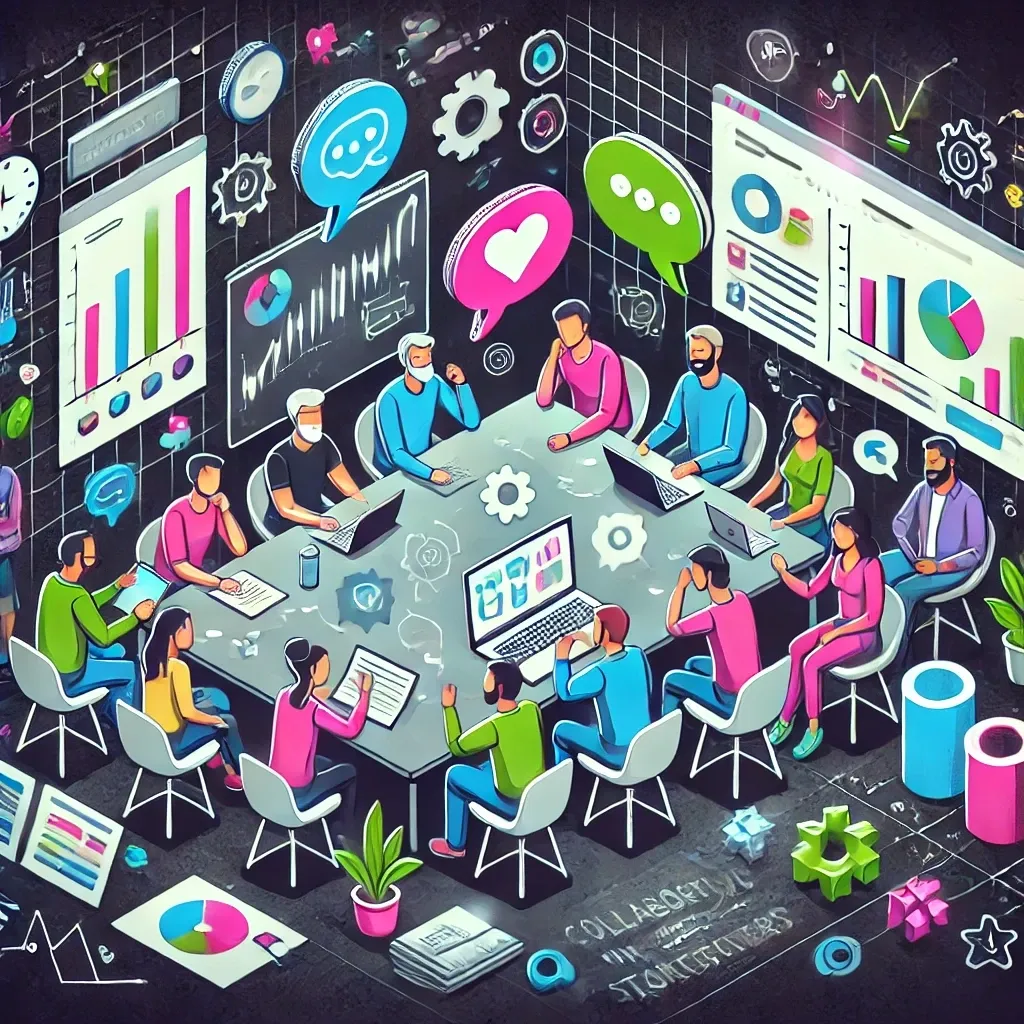Collaborating with Stakeholders
Collaborate effectively with stakeholders—without losing your sanity

Collaborating with stakeholders can feel like juggling flaming torches—while riding a unicycle. But it’s also essential for project success. Whether they’re clients, executives, or end users, stakeholders have a vested interest in your work. Keeping them informed, involved, and (hopefully) happy is a skill every developer needs to master. In this article, we’ll walk through how to collaborate effectively with stakeholders—without losing your sanity.
Why Stakeholder Collaboration Matters
- Aligning Goals
Stakeholders often bring different goals to the table—one’s obsessed with the user experience, while another cares only about the bottom line. Effective collaboration makes sure everyone is chasing the same goal (or at least isn’t working against each other). Clear communication helps align expectations so you don’t end up building something nobody actually wanted. - Avoiding Surprises
Nobody likes surprises—unless it’s free donuts in the break room. Regular communication ensures that no one wakes up three days before launch and screams, “Wait, that’s not what we asked for!” Effective communication keeps those fun moments to a minimum and helps everyone stay on the same page. - Building Trust
Collaboration is about trust, plain and simple. Stakeholders want to feel heard and valued, and if you play your cards right, they’ll trust you to make the right decisions. Consistent updates, realistic timelines, and honest conversations are the secret sauce to building that trust—and keeping it.

Tips for Collaborating with Stakeholders
- Communicate Regularly
Stakeholders love updates—whether it’s a weekly email, a demo every two weeks, or a monthly progress report. Tailor the level of detail to your audience: some want the nitty-gritty, others just want the highlights. Mastering asynchronous communication is also a game-changer, especially when dealing with stakeholders across time zones. Pro tip: More communication = fewer surprises. - Set Clear Expectations
From timelines to deliverables, setting clear expectations upfront saves you from dealing with last-minute chaos. If something isn’t realistic, say so—and explain the trade-offs. This makes it harder for scope creep to sneak in and for stakeholders to drop wild requests the night before launch. Communicating deadlines and expectations early is the best way to keep everyone sane. - Listen and Adapt
Collaboration isn’t just about throwing information at stakeholders—it’s about listening to their ideas and feedback. They might have insights you hadn’t considered. When you make them feel heard, you build stronger relationships and avoid unnecessary friction. Active listening is your best friend here, especially when things get tricky. - Use Visual Aids
Let’s face it: explaining complex technical ideas can feel like trying to explain calculus to a toddler. That’s where visual aids come in. Diagrams, mockups, and charts can help break down even the most convoluted ideas into something stakeholders can actually understand. Using visual aids well means fewer confused faces—and fewer follow-up meetings. - Be Honest About Challenges
Software development is full of unexpected challenges—it’s just how things go. The worst thing you can do is try to hide them. Being upfront about delays or issues builds credibility and keeps stakeholders on your side. Communicating in crisis situations isn’t easy, but honesty is always better than scrambling to cover up problems at the last minute.
Conclusion
Collaborating with stakeholders doesn’t have to feel like an Olympic-level balancing act. With regular communication, clear expectations, and a willingness to listen, you can build strong relationships that keep projects running smoothly. Remember, stakeholders aren’t just obstacles—they’re partners in creating something great. Keep them informed, involved, and aligned, and you’ll avoid a lot of the headaches that come from miscommunication and misalignment.




